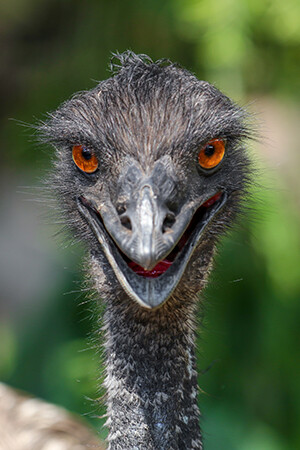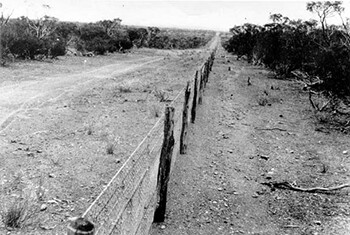The Great Emu War: Australia's Most Embarrassing Defeat

In World War I, the Australian and New Zealand Army Corps, better known as the ANZAC, displayed bravery and tenacity that became ingrained in the Australian national identity. The war marked a major turning point in Australian history, and the Australian people were inspired, empowered, and optimistic about what their country would achieve moving forward. And then, a few years later, the Australian army lost a war against birds. Throw some shrimp on the barbie, turn up the Men at Work and settle in. This is the story of the Great Emu War ...
How Did This Even Become A Thing?
Coincidentally, this goes back to the ANZAC. After the war ended, the Australian government gave veterans land for farming in Western Australia. They saw this as a win-win. Veterans had steady work following their service, and this would provide a boost in the Australian wheat trade. In reality, the results were mixed. Giving inexperienced men plots of land and telling them, "Go make wheat," doesn't magically turn them into farmers. Oh, and then the Great Depression hit and sent wheat prices plummeting.
Don't Miss
This takes us to 1932 -- thousands of veterans-turned-farmers had wheat crops that weren't selling, and they faced a new, unforeseen enemy, the dreaded emu.

Fachry Aditya Rachman/Shutterstock
Normally, emus didn't spend much time around inland Australia. They spent most of the year on the coasts and only came inland when it was time to breed. But during the 1932 breeding season, the emus realized that they didn't need to go back to the coast because they had all these new wheat fields to eat from. Problem: This led to the emus destroying the crops. It wasn't just any problem, though. The farmers believed it was a problem that they needed the military to help solve, and they requested that the Australian government send aid.
Meet the Heroes of Australia
Australian Minister of Defence Sir George Pearce heard of the farmers' struggles with the emus and agreed to put together a dream team. Australia was going to show those flightless fowl who was boss. Major G. P. W. Meredith of the Royal Australian Artillery was given the command of the offensive. He would be joined by two soldiers armed with two Lewis machine guns, the most high-tech weapon of the era. Oh, and they were also going to have a camera crew with them because Pearce thought this was going to be an epic victory that the government could use as propaganda. Honestly, even if the mission was successful, would soldiers mowing down flightless birds with machine guns really look that cool?
Either way, the brave emu avengers traveled to Western Australia, and on November 2, the first shots of the Great Emu War were fired. The greatest victory on Australian soil was going to be swift.
Except, that didn't happen.
Emus Are Tough
Do not underestimate emus. Sure they can't fly, but they can stand at six feet tall and run up to 30 miles per hour. Emus are also Australia's national bird, so the optics of gunning them down with Lewis guns were not particularly great. Oh yeah, and there were 20,000 of them running wild around Western Australia, which meant that the heroic team of three Australians had their work cut out for them.
When Major Meredith's men set up their machine guns and spotted some birds, they quickly realized that the emus could just run away. The guns shot quickly, but the troops couldn't adjust their aim to keep up with the speed of the powerful birds. Hitting the emus at all was hard enough, but if the troops did manage to hit their targets, they learned that emus eat bullets for breakfast. A wounded emu would just keep running as nothing happened, and only after an almost unreal amount of bullets would a bird drop. It's also hard to shoot anything if the guns stop working, which also happened to the Australian army.

But hey, the Australians killed a few birds. A dozen. Maybe. Out of 20,000.
Not only did the emus outrun the Australians, but they also outsmarted them. During the opening days of the Emu War, Meredith and his men would find groups of emus and attempt to ambush them. When doing this, the birds would split off into groups, as though the emus planned out how to defend such an attack. It was hard enough for the gunners to focus their fire on a single cluster of emus, but it became impossible when the birds were running in every possible direction. This meant that if the Australians were going to win against their fowl foe, they were going to have to step their game up.
So they mounted a machine gun on a truck. Surely the dumb birds would stand no chance against the most modern of human technologies, right? The culling was truly about to begin. Except, that didn't work either. The truck couldn't keep up with the Outback's best birds, and the gunner had a harder time aiming in the truck than on the ground. Like in most wars, the dream of a quick and painless victory was soon grounded, much like the birds that the Australians couldn't shoot.
Embarrassment
On November 8, the government called off the Emu War. In terms of appearance, the failure to do much of anything looked just as hilarious then as it does now. The press had fun sharing stories of how the emus turned out to be more of an opponent than expected, and the public laughed about it too. In a practical sense, the war effort was also just a waste for the government. Meredith's men shot 2,5000 rounds, and at most, they killed maybe 300 birds. Don't worry, though; the Australian army suffered zero casualties (aside from their dignity).
Beyond the damage control the government had to do in response to the fact that they lost a war against flightless birds, the root problem remained. The emus were still destroying crops. Even if Meredith culled 300, there were still nearly 20,000 emus running around like they owned Western Australia. And they were probably emboldened by their victory. Once again, the farmers asked for government assistance, and on November 12, George Pearce once again convinced the government to intervene. That's right, the Great Emu War was back on!

Round Two
To the Australian military's credit, the second offensive of the Emu War was more effective than the first. That's saying very little because of how much of a debacle the first attempt was, but hey, it was still progress. For the next month, Meredith and his emu fighters were back on the attack. Until December 10, the machine gun-toting squad continued their hunt, and according to Meredith, they managed to kill nearly a thousand emus. Now, that may not sound impressive considering there were, again, 20,000 birds running wild, but it is even less impressive when you realize that they used nearly 10,000 rounds of ammo to accomplish this.

At this point, the government decided to cut its losses and end the war for good. The press and public still had a field day making fun of using machine guns to fight emus. And even when Meredith's men were killing a fairly high number of birds, they couldn't ever do enough to affect the population in any meaningful way.
Become an Emu Bounty Hunter!
1932 came to an end, and the emus continued to run around Western Australia and eat crops like they owned the place. Even though it did next to nothing the first few times, the farmers kept trying to restart the Emu War, but that didn't happen. However, a much more successful method of culling was put in place: a bounty system.
Oh yeah, if you lived in Australia in the 1930s, you could become an emu bounty hunter. You could be just like the lamest version of The Mandalorian! Instead of traveling the galaxy, you would stay in Western Australia. And you would only fight against one thing, and that one thing is a giant flightless bird. But the idea was the same.
In all seriousness, though, the bounty system was successful in cutting down the regional emu population to less destructive numbers. And as the years passed, better solutions were enacted to both protect crops and ensure that the emu population wasn't excessively hunted. Turns out that fences protect against emus much more than machine guns could. Who knew?

What Did We Learn Today?
Heroes are made on the battlefield, and the Great Emu War gave us thousands of emus to look up to. Their ability to survive against all odds and carry on when under threat of machine-gun fire inspire images not too unlike the AZANC that helped shape Australian identity.
As for the Australians, well, they taught us that it's generally not a good idea to go to war against your national bird. There's no way that this could work out well. But still, we should thank George Pearce and G. P. W. Meredith for giving us one of the most bizarre chapters in history.
Top image: Electra/Shutterstock